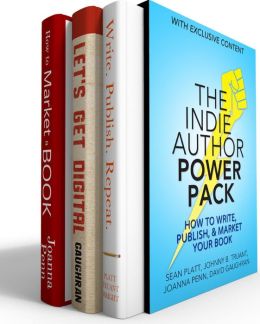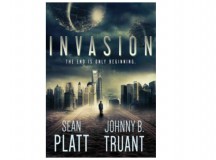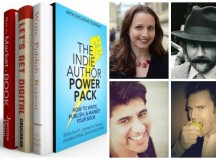
 Ready to make your book marketable?
Ready to make your book marketable?
It’s day 3 of our week-long special event with the authors of The Indie Power Pack. Today Author David Gaughran shares insight on best practices that take you from writer to marketing-savvy eBook publisher.
Building a bestseller: Tips to make your book marketable by David Gaughran
Everyone wants to be a bestseller… even if they don’t always admit it publicly. We all want to sell lots of books. If we didn’t, our stories would be gathering dust in a drawer instead. Reaching readers can be tricky. However, we often make it harder for ourselves by skipping over key steps.
Writers tend to focus on the marketing challenge but often forget to make their book marketable. Seth Godin put it well when he said that the best marketing is baked into a product. For self-publishers, this means implementing certain best practices when publishing your work. You need a compelling book, and to adopt a professional approach with its presentation, but it’s much more than that.
As creative people, we might instinctively resist slapping simplistic labels on our books, or fight against genre conventions when it comes to something like covers. But it’s important to present our work in an instantly recognizable package to readers.
You only have a few seconds to grab their attention. The job of the cover is not to show how deliciously your novel subverts standard tropes, but to get readers – the right readers – to click on it. The job of the blurb is not to impart your entire plot, but to tease and intrigue, to give readers a tantalizing glimpse, just enough of a taste to want to read on.
Resist the urge to reinvent the wheel when it comes to presentation. The time to dazzle readers with originality is inside the book. But you have to get them that far first.
Study the bestsellers in your genre. Police procedurals don’t tend to have a crime scene on the cover because of a failure of imagination. It’s because new readers encountering that book will be doing so in a sea of other covers – whether that’s in a bookstore or on the internet. Your cover needs to tell readers right away what kind of book it is.
You need to take care with the entire package because each aspect is an opportunity to hook readers… or lose them. A striking cover (aimed at the right readers), a killer blurb, an opening which grabs people right away, and a price which doesn’t make them hesitate, will all help with the process of turning eyeballs into sales.
If you have a poorly designed or inappropriate cover, a flaccid blurb, a tepid opening, or a price which causes readers to think twice, the best marketing campaign in the world will get poor results.
I see writers all the time skipping over one or more of these steps and then complaining that they got underwhelming results from an ad campaign. You need to have the basics in place first. This is the unsexy part which makes a real difference when your book is out there in the world, fighting for attention.
How you present the story inside an e-book is just as important. You don’t want a reader wading through pages of extraneous information to get to the meat. If they are sampling your book before purchasing, as many do, you need to hook them right away or they’ll move on to something else. Keep your front-matter to a minimum.
Even more crucial is the end-matter. When a reader finishes one of my books, they will immediately be confronted with four things: a list of other titles I have published, an invitation to sign up to my mailing list, a short note requesting an honest review, and a variety of ways to connect with me (blog, website, Twitter, Facebook, and an email address).
Effective end-matter makes a huge difference to your chances of building a career. If you have done your job properly, readers will be viewing you very positively. This is your opportunity to nab them, to turn them into the kind of engaged readers that will buy your book during launch week (and tell all their friends to do the same).
People are much more lazy and forgetful online. If you don’t make it easy for them – with clickable links to purchase your other titles and sign up to your mailing list – then they will slip through your fingers. And it’s amazing what can happen if you ask for something: putting in a polite request (with a clickable link) led to my review count soaring.
Once you do have all these basics in place, the challenge of reaching readers becomes much more manageable, and you will get a much better return from all the strategies that successful self-publishers employ such as 99c sales, book bundles, group promotions, free runs, email marketing, and advertising.
Presenting your work professionally also makes your book more shareable. Put your reader hat on for a moment and think back to all the books you have recommended to fellow readers. A recommendation is always less powerful when it comes with caveats.
“The cover is terrible but it’s a great read, promise.”
“It starts off really slow, but if you can get through the first thirty pages it starts getting good.”
Needless to say, qualified recommendations are never as effective. The publishing world is changing at the speed of light, but one thing has remained constant: word-of-mouth is what really shifts books. Everything else we do is an attempt to stimulate that.
You don’t want any caveats attached when readers recommend your work.
David Gaughran’s Let’s Get Digital: How To Self-Publish, And Why You Should is just one of three toprated selfpublishing guides available right now for only 99 cents in The Indie Author Power Pack: How to Write, Publish, and Market Your Book.











David Gaughran’s advice is always clear and dependable. Thanks for this Boot Camp Nook Press.